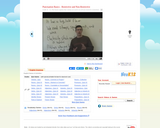
This video discusses the use of commas in restrictive and non-restrictive uses.
- Subject:
- English Language Arts
- Material Type:
- Lesson
- Provider:
- NeoK12
- Date Added:
- 02/26/2019

This video discusses the use of commas in restrictive and non-restrictive uses.

In this performance task, students will work cooperatively to research the history of radio drama. Resources include original scripts from the 30's and 40's and an audio recording of Orson Wells' "War of the Worlds." Using what they've learned from their research, each group will create a script for a new mystery series. Students can extend the lesson by recording their drama complete with sound effects.

In this review activity designed to reinforce student understanding of grammar, punctuation, and spelling, the class will be divided into teams that race against each other to correctly identify and correct sentences on the board.

In this lesson, students work to revise their uses of pronouns and antecedents, verifying that the two agree and that the correct pronouns are used in writing. Students first take notes to review before checking their own work for correctness.

Students will consider the nature of stories and learn to write more concisely by reading and writing flash fiction.

This is a digital anchor chart.
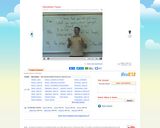
This video defines and explains the use of subordinate clauses, including how they fit into sentences.

In this mini-lesson, students listen to the song "In My Eyes" by Rufio, then scan the lyrics of the song for contractions.
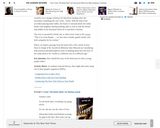
This lesson focuses on the pairing of one NY Times article about the Holocaust with a powerful literary passage from the 2005 novel "The Book Thief.' The novel, set during WWII in Germany, is the story of a girl who shares her stolen books with neighbors during bombing raids as well as with the Jewish man hidden in her basement before he is marched to Dachau. The pairing of the book and article leads students to address the question, "How should the story of the Holocaust be told to young people today?"

Students are invited to explore the cultural offerings around them "” from architecture to books, dance, fashion, film, food, music, theater, TV and video games "” and write reviews about what they experience. The New York Times models along with advice from current Times critics to help them through the process.
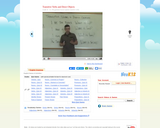
This video gives a brief overview of transitive and intransitive verbs, and explains how transitive verbs relate to direct objects.
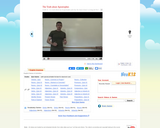
This video explains usage of apostrophes and how they function to modify words.

This video examines the ways a sentence can be construed by reading a present participle verb as a gerund or a verb.

This resource provides a lesson designed to guide students through a reading of the short story "Lamb to the Slaughter". Students will read and analyze the text. Afterwards, students will reflect through response to guided questions and write an essay.

This resource provides a lesson that should accompany a reading of Einstein's four short works by Albert Einstein. Included is a speech, letter, and an essay. Students will read an analyze. Afterwards, students will be responsible for completing an essay.

This lesson plan teaches students to vary the types of sentences used in their writing to create stronger overall written pieces. Students review types of sentences and practice arranging them before revising their own works for better sentence structures.

In this lesson, students will learn how to combine sentences using semicolons and colons, as well as how to best split sentences.
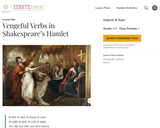
Expose middle school students to a first taste of Shakespeare from the angle of the ghost story and launch into the subject of verbs. In this lesson, they learn how Shakespeare uses verbs to move the action of the play. Students then distinguish generic verbs from vivid verbs by working with selected lines in Hamlet's Ghost scene. Finally they test their knowledge of verbs through a crossword interactive puzzle.
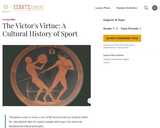
This lesson explores the twofold concept of "arete" (virture and excellence in sports) focusing on the ways in which the concept of arete bridges the gap between philosphy and sports. Students will read and critically evaluate an academic essay arguing that through the concept of arete, the ancient Greeks created a specialized athletic culture.

This video introduces adjectives and demonstrates multiple ways they can be used in sentences.